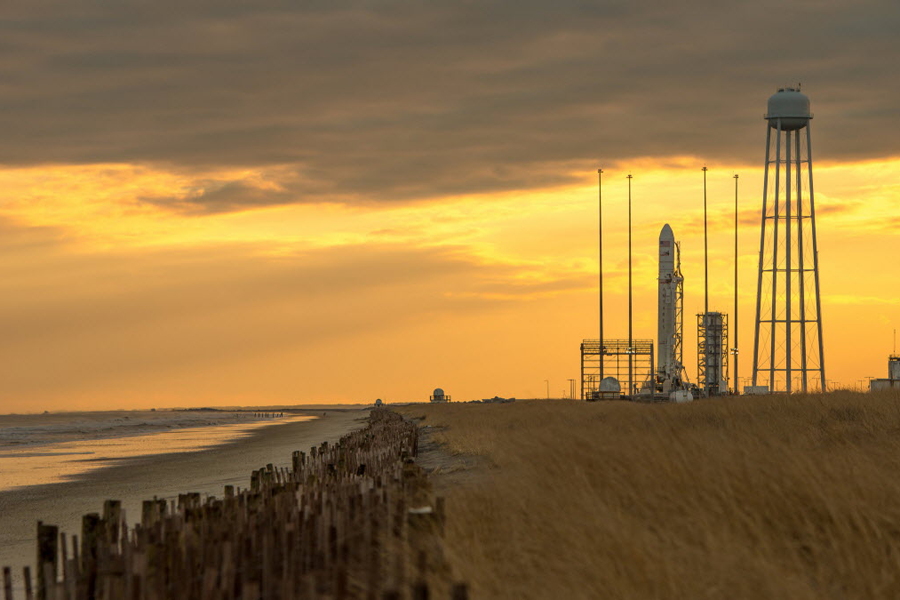Wallops Island launch sends gifts, ants to space station
Loading...
| CAPE CANAVERAL, Florida
Florida (AP) — A privately launched supply ship rocketed toward the International Space Station on Thursday following a series of delays ranging from the cold to the sun.
Orbital Sciences Corp. launched its unmanned Antares rocket from Wallops Island, Virginia, offering a view to nearby states along the East Coast. It successfully hoisted a capsule packed with 3,000 pounds (1,360 kilograms) of equipment and experiments provided by NASA, as well as food and even some ants for an educational project. Christmas presents also are on board for the six space station residents; the delivery is a month late.
The spacecraft, named Cygnus, should reach the station on Sunday. The orbiting outpost was zooming over the Atlantic, near Brazil, when the Antares blasted off.
"It's going to be an exciting weekend," Japanese astronaut Koichi Wakata said in a tweet from the space station.
The delivery had been delayed three times since December, most recently because of a strong solar storm. Engineers initially feared solar radiation might cause the rocket to veer off course. But additional reviews Wednesday deemed it an acceptable risk. Previous delays were due to space station repairs and frigid temperatures. Thursday was a relatively balmy 45 degrees.
NASA is paying Orbital Sciences and the SpaceX company to restock the space station. The Orbital Sciences' contract alone is worth $1.9 billion.
This was Orbital Sciences' second trip to the orbiting lab, but its first under the contract. The company conducted a successful test run last September. Two more trips are scheduled for this year. Orbital Scienceslaunches from NASA's Wallops Flight Facility in eastern Virginia, its corporate base. California-based SpaceX flies from Cape Canaveral. It's scheduled to make its fourth supply run next month.
"Great way to start out the new year ... we're all smiles here," said Bill Wrobel, director of NASA's Wallopsfacility, after Thursday's launch.
The U.S., Russian and Japanese space station residents eagerly awaited the goodies inside the Cygnus. Their families included Christmas gifts; the Cygnus should have arrived in time for the holiday. NASA also tucked in some fresh fruit.
When asked earlier this week if any gifts were swapped out given the delay, Orbital Sciences' executive vice president Frank Culbertson quipped, "We haven't changed them out for Valentine's cards."
"We think they'll enjoy them anyway," he told reporters.
NASA is counting on private industry to keep the space station well stocked and, in another four years, to provide rides to the outpost for U.S. astronauts. Until then, NASA is forced to buy seats on Russian Soyuz capsules. The space shuttles provided most of the heavy lifting until their retirement in 2011.
Russia, Europe and Japan make their own supply runs.
Orbital Sciences named this Cygnus capsule after the late shuttle astronaut C. Gordon Fullerton, who died in August at age 76 after suffering a stroke. He flew the airplane for the company's air-launched Pegasus rocket during the 1990s.
After arriving at the space station, the Cygnus will be unloaded and then filled with trash and cut loose for a fiery re-entry in mid-February.
Space station construction began in 1998 and ended with the shuttle program. The White House on Wednesday agreed to a four-year lifetime extension for the station, to 2024.





